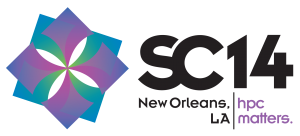Last May a report featured in the New York Times, made hopeful news about gene sequencing and high performance computing, HPC, contributing to help doctors take an important step toward the ability to harness a person’s own immune system to fight cancer. Latest developments on this important research were reported by Dr. Steven A. Rosenberg (National Cancer Institute) and Dr. Eric Tran (National Institutes of Health) in a webinar about NIH clinical trial NCT01174121 using adoptive cell therapy, a technique that harnesses a person’s own immune system to battle cancer.
This research is part of an early yet foundational body of science known as Precision Medicine, where genome sequencing and other massively parallel bioanalytical tools are at the heart of diagnosis, prognosis, and therapeutic development and decision making. Taken together, advances in high performance computing combined with genomics, proteomics and multidisciplinary fields such as pathology and radiology all contribute toward ground breaking research results.
For example, the University of British Columbia Sequencing Centre at Pharmaceutical Sciences is one of a consortium of organizations launching the Pharmacogenomics Registry for Individualized Medicine (PRIMe) study to research the 161 drug-gene interactions identified by the FDA using exome sequencing (sequencing the regions of the genome that contain protein-coding genes). Their study uses Warfarin as a benchmark, a drug that has FDA label guidance to seek pharmacogenomic information in determining initial dosage. The site-specific differences in DNA – polymorphisms – associated with Warfarin sensitivity have been known for several years, but the PRIMe study seeks to validate exome sequencing as a means to obtain this information and defines standard operating protocols for everything from collecting saliva to consenting process to delivering reports back to pharmacists, who in this study are the ones interacting directly with the participants.
Behind the scenes, what specific tools and techniques are available today that enable this research, leading toward the possibility of Precision Medicine?
Among the companies powering this medical acceleration is Waltham, Massachusetts-based Knome, Inc. Through its knoSYS® system, Knome provides labs with a scalable, production-grade informatics system for the analysis, annotation, and interpretation of human next-generation sequence data – in other words, an end-to-end genomics workflow solution all packaged in a refrigerator-sized box suitable for use at research hospitals and therapy development clinics. This allows research hospitals and clinics to conduct their own genomics analysis on site, right alongside their other pathology and radiology facilities.
Genomic testing has traditionally been a complex, resource-intensive process that relied heavily on a highly specialized team to analyze and interpret data. The knoSYS was designed to streamline clinical sequencing testing and to facilitate collaboration among all the stakeholders. This process is facilitated through an easy-to-use GUI with a powerful informatics engine in the background running on knoSYS hardware.
At the center of the knoSYS k100 hardware model is Seagate’s ClusterStor Lustre based parallel file systems, which provide users with 60 TB of usable HPC storage and ClusterStor Manager, a dashboard that consolidates the management of the storage infrastructure into a single-pane-of-glass view.
“For greatest peace of mind, our customers want their patients’ phenotypic and genomic data stored in-house behind their own firewall,” stated Michael McManus, Vice President of Operations. “To facilitate this requirement, Knome designed a robust hardware system that was capable of storing and analyzing multiple genomic files that can be in the range of 400+ GB each. We chose the ClusterStor Lustre system to handle storage on the k100 and are pleased with our decision. Seagate has been a great partner to work with.”
Genomics, Seismic Processing and Other HPC Applications – on Display at SC14
As we’ve referenced in earlier pieces Seagate will be exhibiting at the forthcoming SC14 in New Orleans LA, November 16-21. There, in booth 3239, you will find the Seagate ClusterStor team ready to describe and demonstrate a wide variety of application uses of our HPC solutions. As a bonus, visitors to the booth will be entered for daily drawings of Seagate products. We encourage attendees to contact our team to schedule an appointment or stop by our booths during the events to see our live demos and booth presentations.








